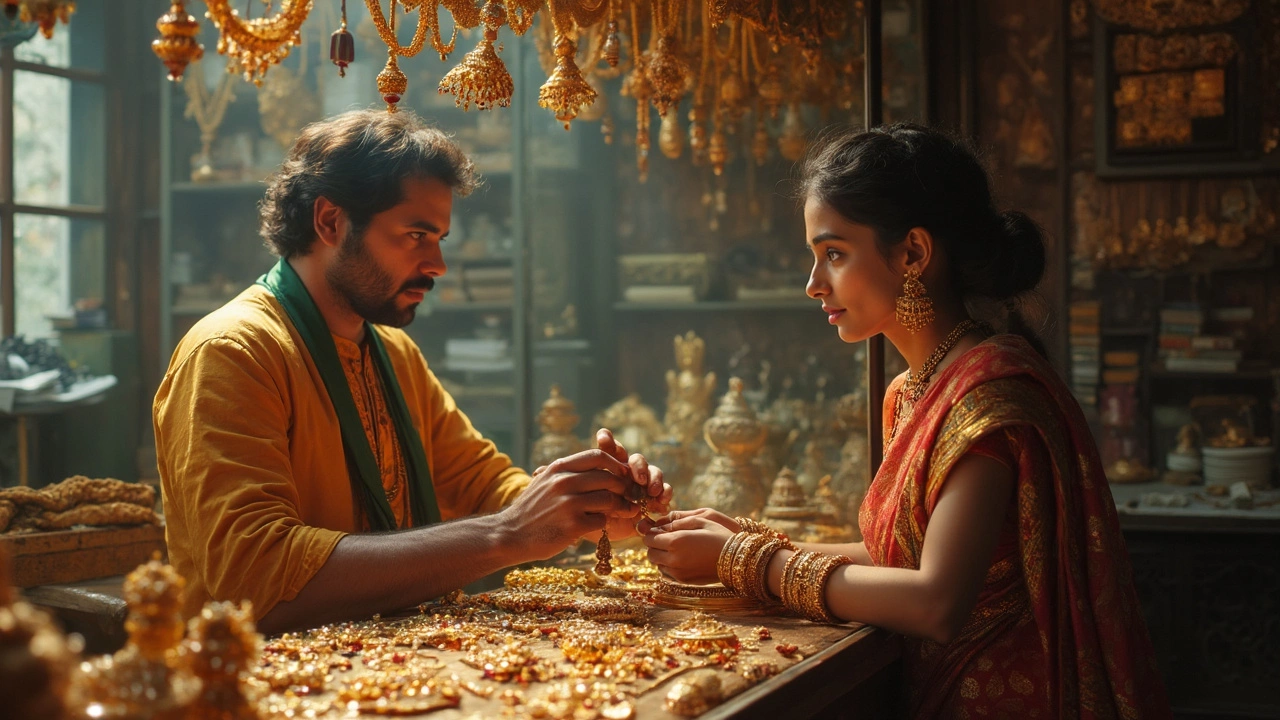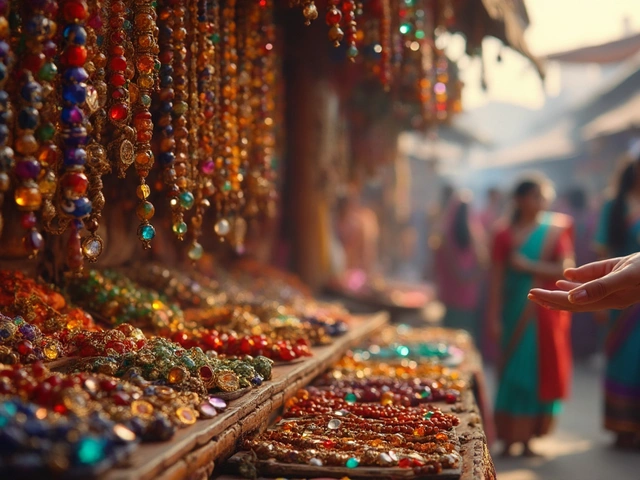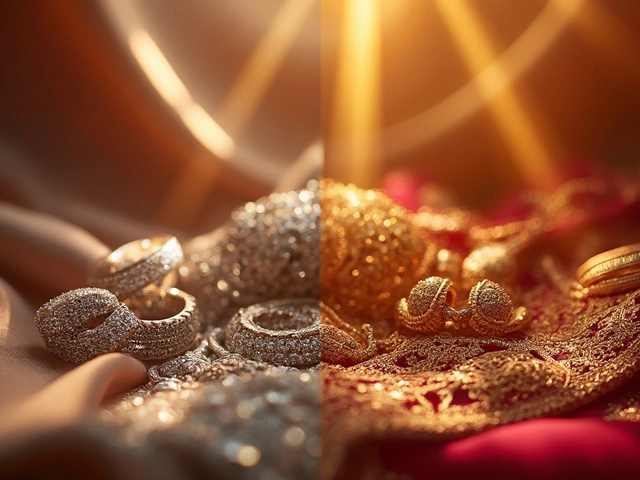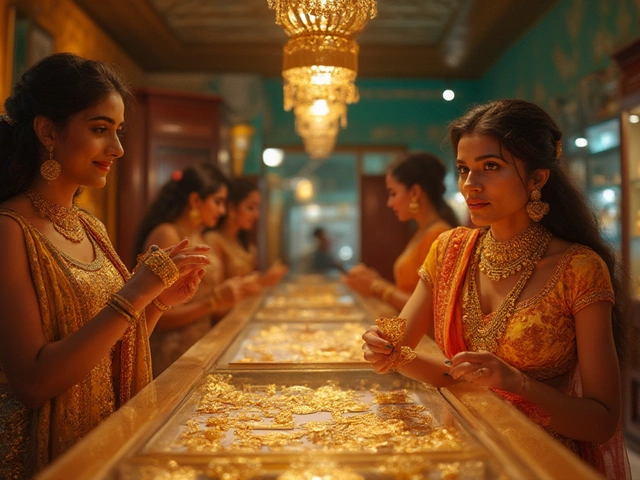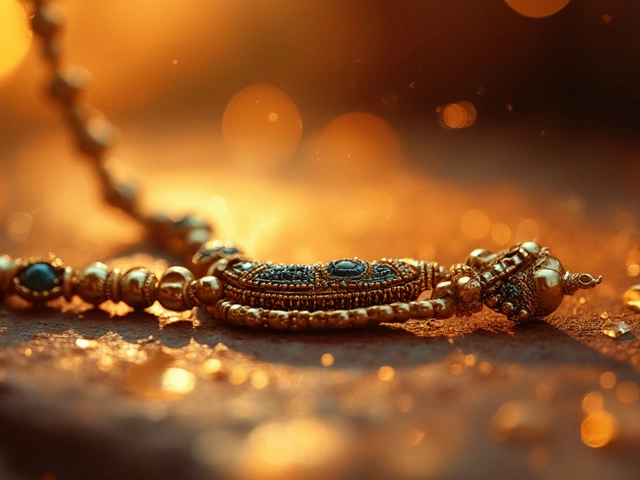Antique Jewellery Designs: What Makes Them Special
If you love jewellery that tells a story, antique pieces are hard to beat. They bring history, craftsmanship, and a touch of drama to any outfit. Whether you’re hunting for a family heirloom or a statement piece for a special event, knowing the basics helps you pick the right one without getting fooled.
Antique jewellery usually means anything made at least a hundred years ago, but collectors often use the term for pieces that are at least fifty years old and show a clear style from their era. The age cutoff matters because it sets expectations for wear, patina, and value. A piece from the Mughal period, for example, looks very different from a 1920s Art Deco ring.
India’s most loved antique styles come from the Mughal, Rajput, and colonial periods. Mughal work shines with intricate enamel and gemstone settings, while Rajput pieces boast heavy gold and bold Kundan work. The colonial era introduced European motifs mixed with Indian craftsmanship, creating a unique hybrid look that’s still popular today.
Design details are the real clues. Look for hand‑cut stones, tiny hand‑engraved motifs, and filigree work that can’t be machine‑made. The metal often has a natural patina – a soft green or brown hue – that shows age. Those small quirks are what make each antique piece one‑of‑a‑kind.
How to Identify Real Antique Pieces
The first step is to check for hallmarks. Older Indian pieces usually carry a BIS stamp, a maker’s mark, or a tax seal. If the stamp looks worn but still legible, that’s a good sign. Next, examine the weight. Genuine gold feels heavier than modern gold‑filled or plated items. You can also do a simple magnet test – real gold and silver won’t be attracted.
Patina is another tell‑tale sign. Freshly polished antique jewellery loses its charm quickly, while a piece with a natural, uneven patina usually means it’s been around for a while. Ask the seller for provenance – old photographs, receipts, or family stories add credibility and help you gauge the piece’s history.
Caring for Your Antique Jewellery
Antique pieces need gentle handling. Avoid harsh chemicals; a mild soap solution and a soft cloth work fine for cleaning. Store each item separately in a soft pouch or a lined box to prevent scratches. Keep them away from direct sunlight and humidity, which can speed up tarnishing.
When you’re not wearing an antique, consider a climate‑controlled safe or a lockable drawer with a silica‑gel packet. If a piece shows signs of serious wear, take it to a professional jeweller who specializes in restoration. They can reinforce weak spots without stripping away the original character.
Styling antique jewellery is easier than you think. Pair a heavy Kundan necklace with a simple modern dress for a balanced look, or wear a delicate Art Deco brooch on a plain shirt to add intrigue. The key is to let the piece be the focal point, not to overwhelm it with too many accessories.
Buying antique jewellery can be a rewarding hobby if you stay curious and careful. Start with reputable dealers, verify hallmarks, and ask for documentation. Take your time, enjoy the stories each piece holds, and soon you’ll have a collection that feels both personal and timeless.
Jewelry That Sells Best at Pawn Shops: Antique Designs That Shine
Ever wondered which jewelry pieces actually get snapped up at pawn shops? This article breaks down the specific antique jewelry designs that sell fast, and why buyers want them. Find out what makes these items valuable and how you can get a fair price. Plus, get practical tips for preparing your jewelry before you walk into the shop. If you've got a dusty drawer full of ‘maybe someday’ pieces, this will help you see which ones are secretly worth a mint.
